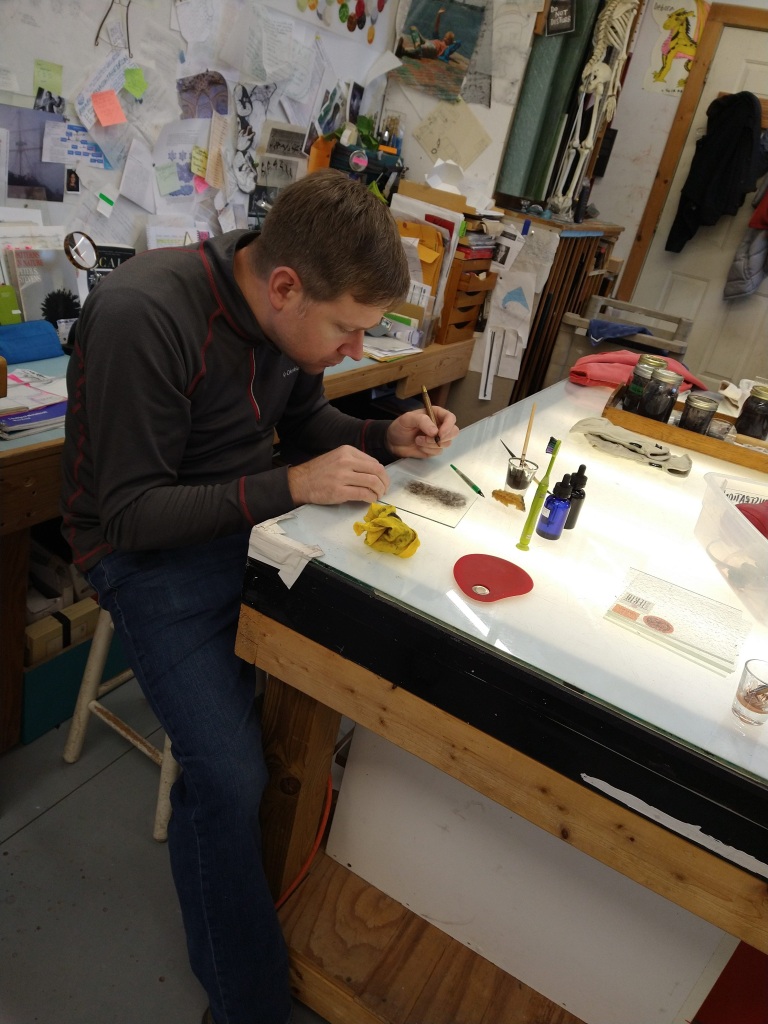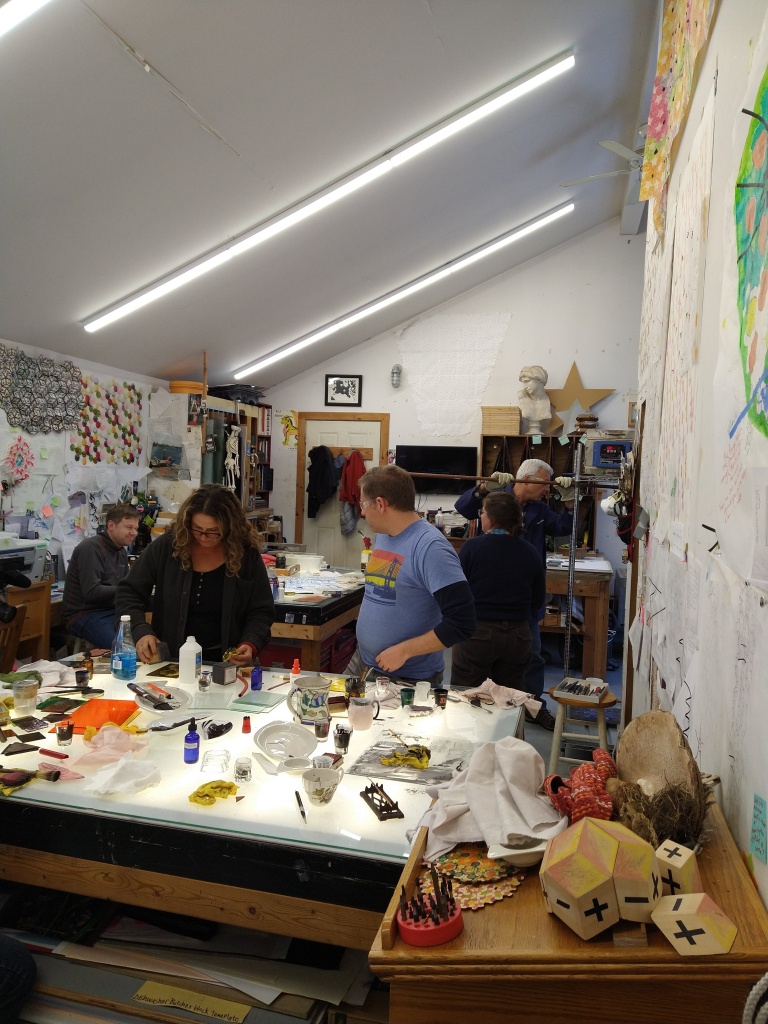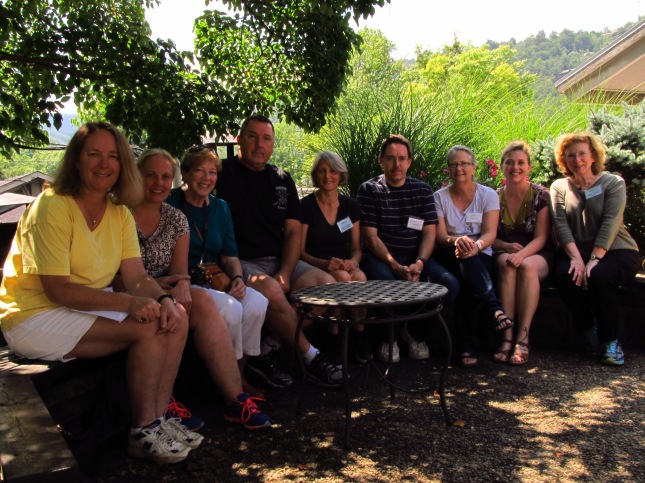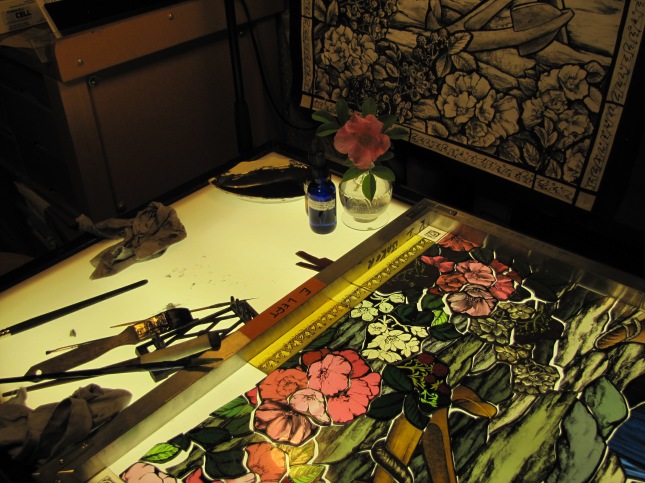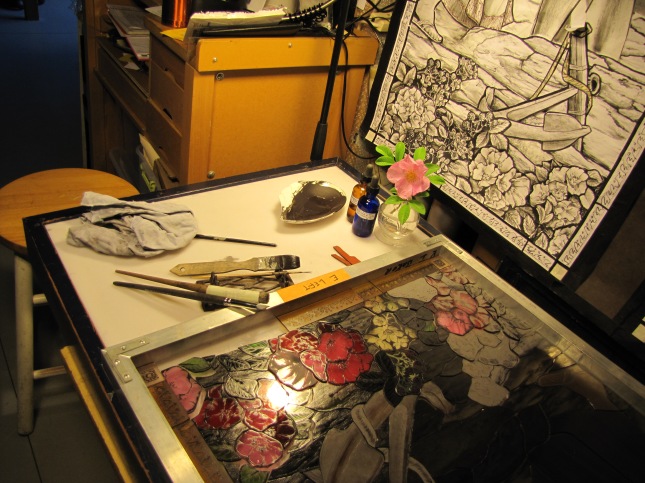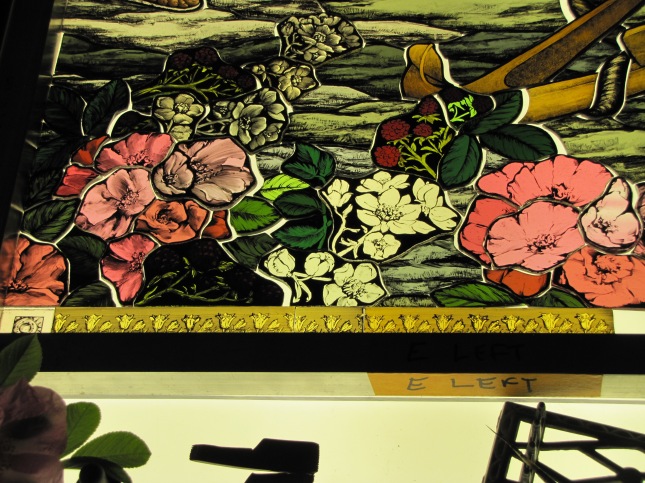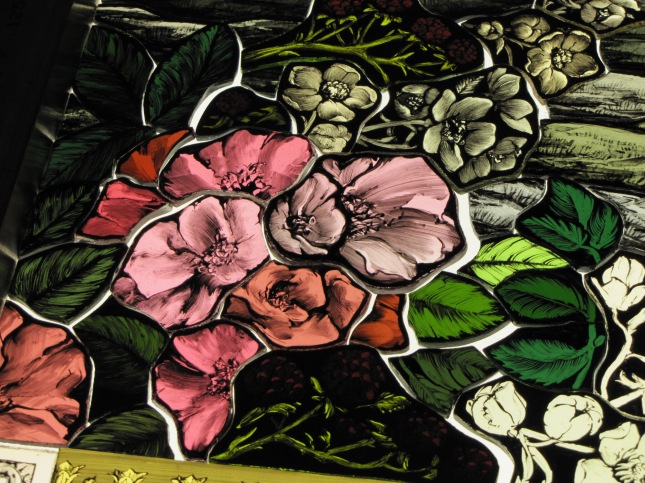
The window is still 1,200 little pieces of painted glass lying on transparent bottomed trays on my light tables. It is progressing slowly and surely toward completion. My current work consists of a lot of running up and down stairs to the loft area of my studio to review my glasspainting from a distance.
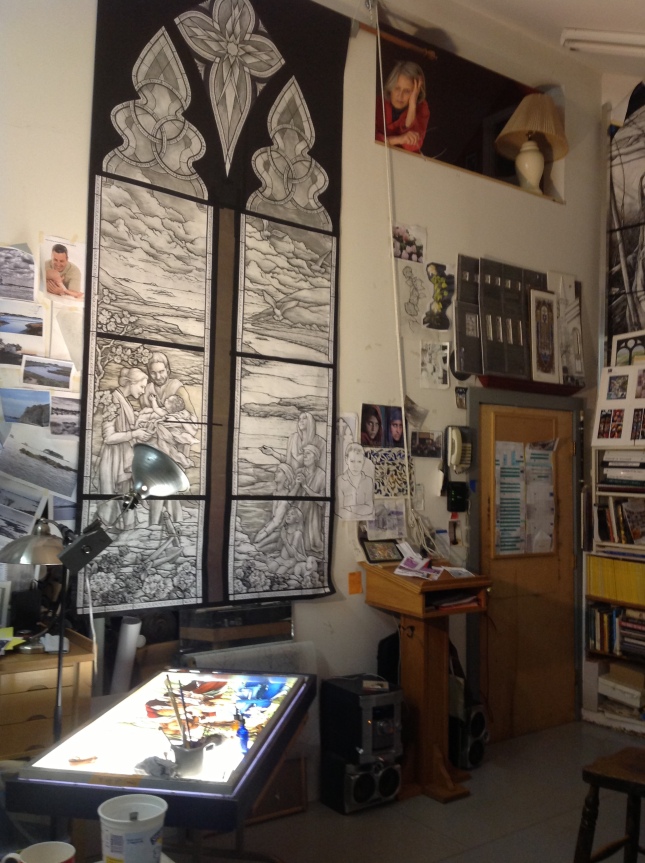
Looking down at the work from above is crucial for assessing how well the modeling is working. It also mimics a viewing angle from the inside the church.
Stained glass people of old used all sorts of tricks to do this. Looking through the wrong end of opera glasses, crucially placed mirrors, standing on a stepladder…. The camera (or even your cell phone) helps a lot too, especially if you view your work at different times of day and in different lighting conditions.
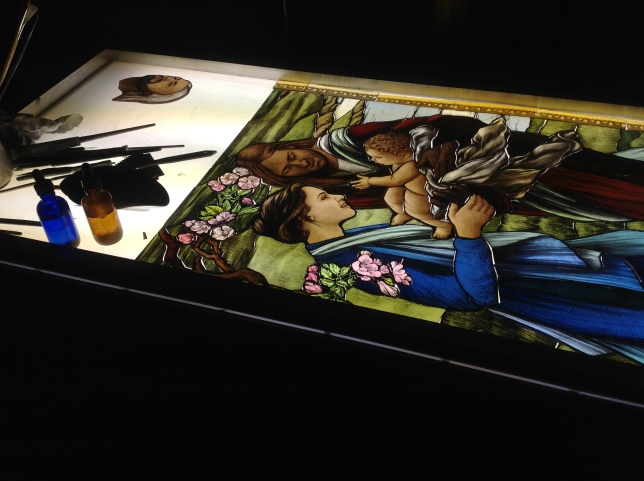
Here’s Joseph during a facelift, and some of the steps it took to get him there.
1) the glass was masked and sandblasted to create a white area for his undershirt, then firepolished in the kiln.
2) I painted his features as a black line drawing (the ‘traceline’).
3) textured his hair and beard.
4) covered the entire piece of glass with a thin layer of smooth even brown glasspaint (the ‘matte’) and stippled it while wet to create a manly texture (!).
Now, here’s the ‘facelift’!
5a) in the first photo I’ve started to remove the matte to create highlights in his hair and brighten one side of his face.
5b) in the second photo, an hour or so later, you can see the form of his face beginning to emerge.
6) in the third photo I’ve textured Joseph’s undershirt and popped him back in place for a review. Another run upstairs to the loft!
Now, check out Mary before and after her visit to the hair salon.
Note a couple of areas where I’ve laid on mattes and not yet removed them. On the left, Mary’s stole is still dark. On the right, I’ve brushed it back to create highlights.
In the left photo, baby’s blanket has been textured and lightly matted . In the right it’s dark where I have laid on the matte and picked out just a few of the brightest areas. There’s a lot more to be removed (more brightness to be revealed). This is the classic ‘painting with light’ of stained glass.
Visually, the blanket will create a bright starry area around Jesus, the focus of the overall composition. When I’ve finished, the white and pale amber glass will be sparkly once again.
These are the same glasses used in the nativity star at the top of the window.
